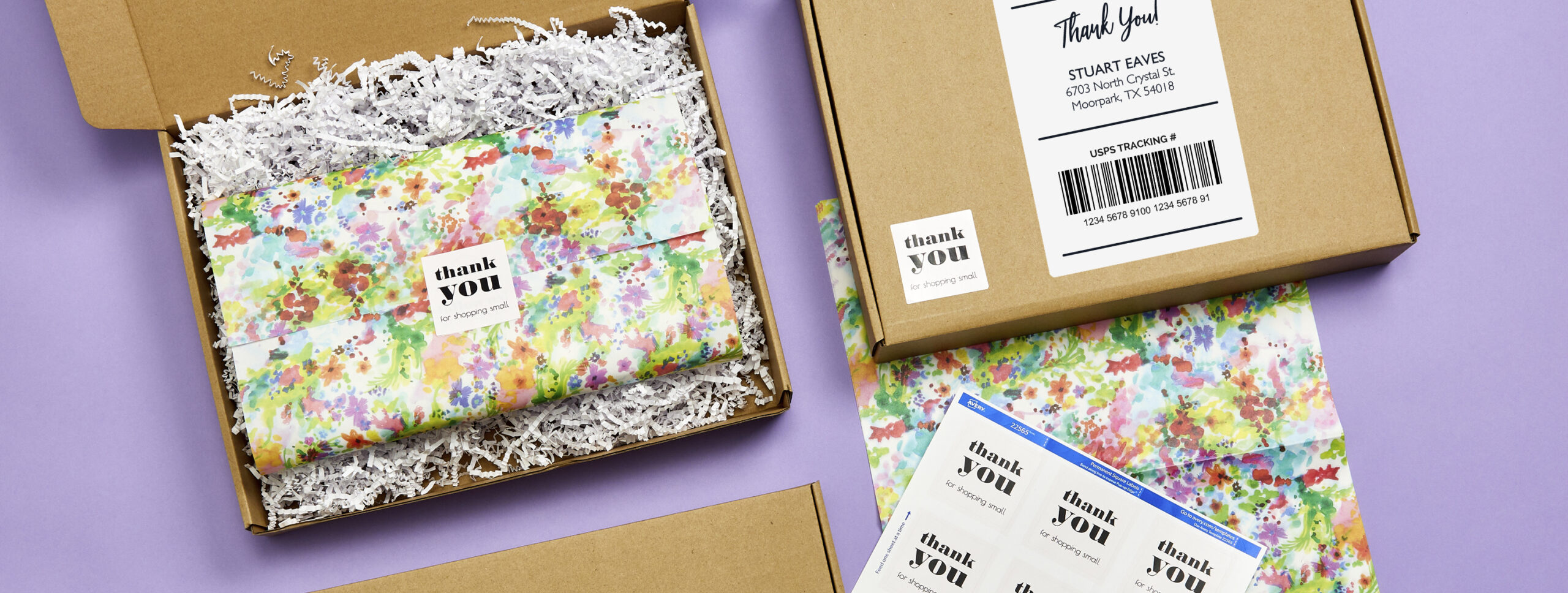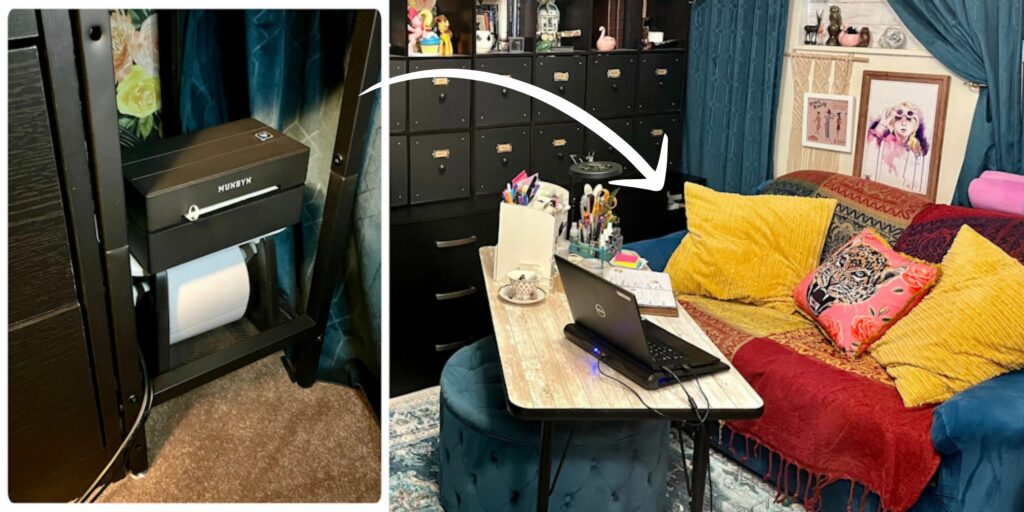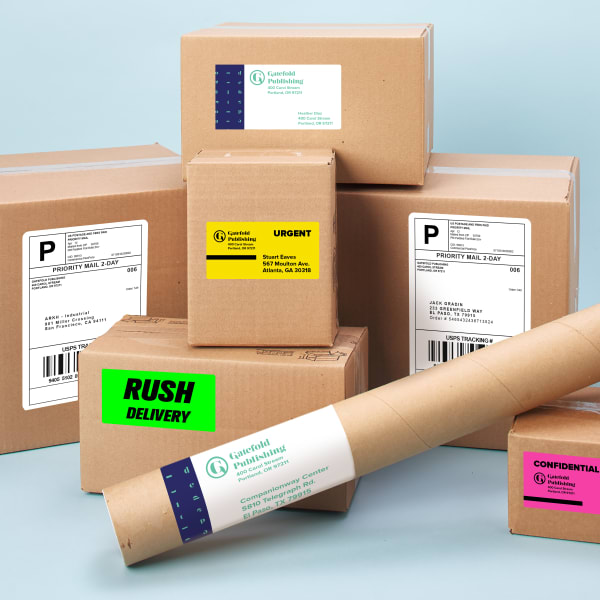
How to Send Out a Package: Practical Answers to Your FAQs
Estimated reading time: 6 minutes
Learn how to send out a package for business or personal needs
When I first started selling my handmade creations in 2014, the thing that I struggled with the most was sending out packages. Of course, when I started, shipping packages from your home was more complicated. However, nowadays nearly everyone has a side hustle business. In fact, according to Forbes, side hustles are the new normal. That means there’s higher demand for DIY shipping supplies that make packages look professional and more tools and help than ever before.
In this guide, I’m going to share 10+ years of experience sending out packages from my home business. I’ll also answer your most pressing questions about how to ship something efficiently and correctly, with practical steps to avoid common mistakes.
More articles you might like
General FAQs to help you send out a package
Shipping my first online order was definitely a learning experience. I didn’t even know where to start when it came to sending out the package. I could have really used someone to just answer the most basic questions. In fact, the only place I knew of to ship something was the post office. Don’t get me wrong: sometimes the post office is the best choice, but not always. I definitely save money by comparing shipping services for each package based on the size, weight, distance, and whether or not I need insurance.
Answer: First, pick the right box or envelope—something sturdy and just the right size for what you’re sending. I recommend also securing the item inside with bubble wrap or packing paper so that there are no gaps between it and the box or envelope. Finally, seal it up with packing tape and add your shipping label to the flattest, most prominent surface of the package.
Answer: When it comes to shipping, it’s all about comparing your options—USPS, UPS, and FedEx. Take a look at factors like cost, speed, and package size. Make sure you’ve got your package details ready—dimensions, weight, delivery address, and all that. When I’m sending out a package, I use online calculators to make things easier. That way I can quickly get an estimate of shipping rates and delivery times.
Answer: Yes! Reusing boxes is fine if they’re sturdy and undamaged. In fact, it’s one of my favorite tips for saving money on shipping. It’s better for the environment too. Be sure to remove old shipping labels or barcodes to prevent confusion during transit.
Pro Tip: Quality block-out labels are an excellent way to cover old shipping labels and barcodes. Avery labels with TrueBlock technology are the best block-out labels I’ve ever seen—and I’m not just saying that because I work here. Check out this demo video showing TrueBlock labels covering in real time!

Questions about shipping labels
I will never forget the first shipping labels I made. I was literally printing them out on printer paper, taping them on boxes, and wishing for the best. Let’s just say it was definitely a learning experience. Firstly, the packages looked horrible and didn’t represent my brand at all. The whole package looked cheap and sloppy, but my items are meticulously handcrafted with high attention to detail.
And that’s not even the worst part. At least twice, my taped-on paper fell off, and the package was lost. Luckily for me, my customers were very sweet about it, but I lost nearly $300 remaking the items and resending them. Since then, I’ve learned a lot about common shipping issues for small businesses. Simply learning how to use shipping labels correctly has reduced lost packages, saving me money and time. Not to mention, reliable shipping has also boosted my business reputation. Let’s dive into the shipping label FAQs that can help you get there sooner.

Folding or wrapping shipping labels around packages can cause information to be missed by the carrier. Luckily, you can order Avery blank and custom-printed labels in any size (up to 7″ x 10″) so you can pick the perfect size for your package.
Answer: When you send out a package, your shipping label should include two key pieces of information: the recipient’s full address and your return address. These details ensure your package gets to the right place—and can find its way back to you if needed.
Answer: The best spot for your shipping label is the largest, flat surface of your box or envelope. This helps ensure it’s easy to scan and process. Avoid placing the label on seams, edges, or corners, as these areas can make scanning difficult and increase the risk of damage during transit. A clear, well-placed label keeps your package on track and looking professional!
Answer: Over ten years, I’ve found that the best way to protect shipping labels is to start with durable, ideally waterproof, labels. It really is worth the extra cost when compared to the cost of lost shipments. Next, wipe the box or envelope with a dry cloth to make sure there’s no dust so that the labels securely attach to the box. Never add clear packing tape over labels, as it can cause glare that messes up the machine reading the barcode. Use my experience and get ahead of the game so you don’t have to learn the hard way.
Wrapping up: the right way to send out packages
Shipping might seem like a small detail, but trust me—it can make or break your experience, whether you’re sending personal packages or running a small business. I’ve learned this firsthand after years of trial and error (and a few lost packages). But once I nailed down the basics—like choosing the right supplies, using proper labels, and protecting them—I saw a huge difference. Not only did I save money and time, but I also gained peace of mind knowing my packages would arrive safely and look professional. I hope this guide helps you skip the learning curve and feel confident every time you ship.
For more great ideas and tips, follow us on Instagram and Facebook, and check out our small business Pinterest board. You can also connect with me on LinkedIn for more insights from my perspective as an Avery expert and small business owner.



